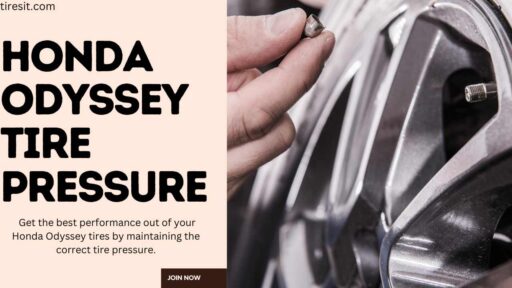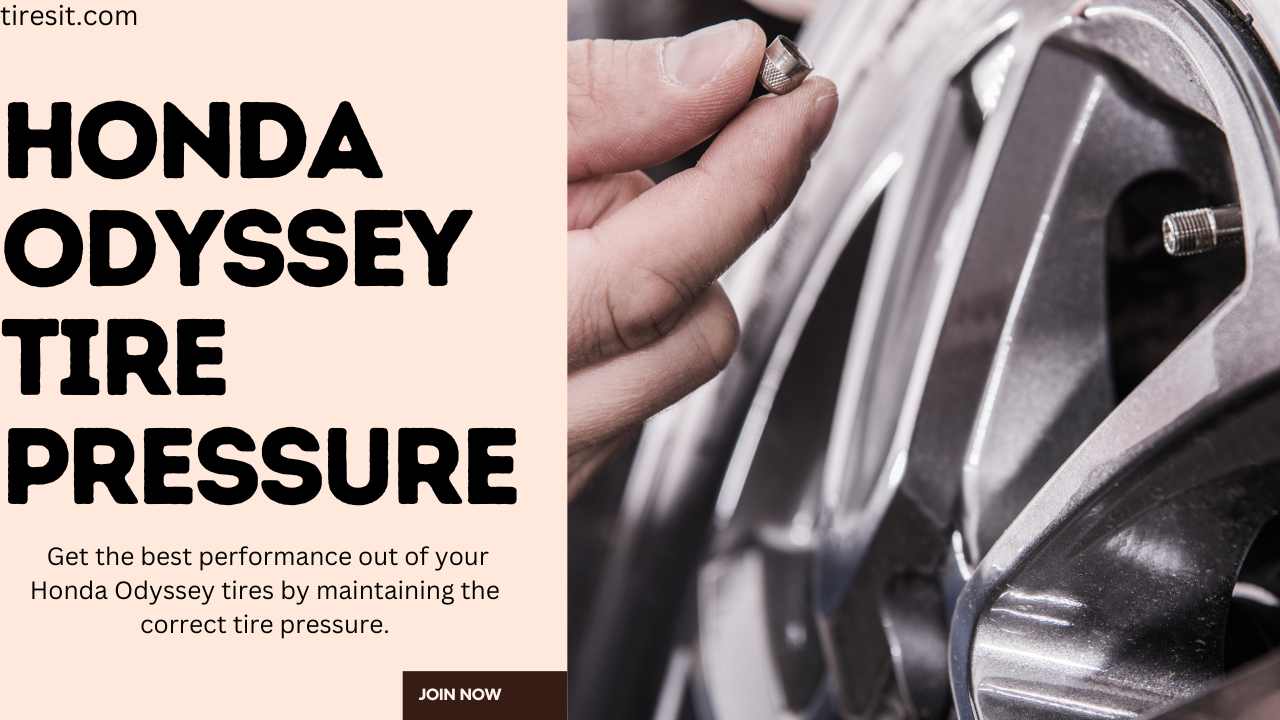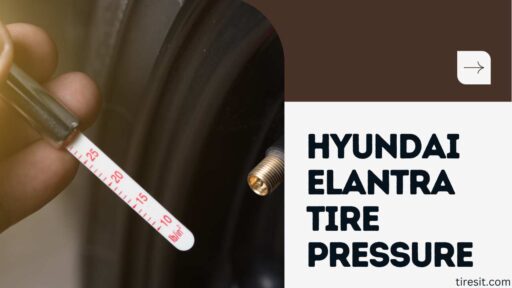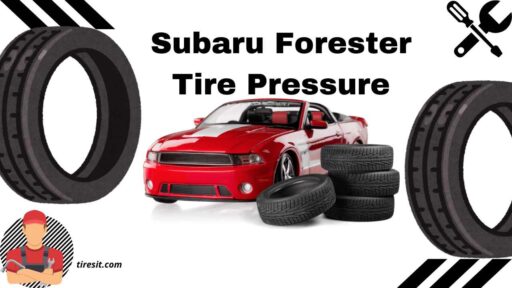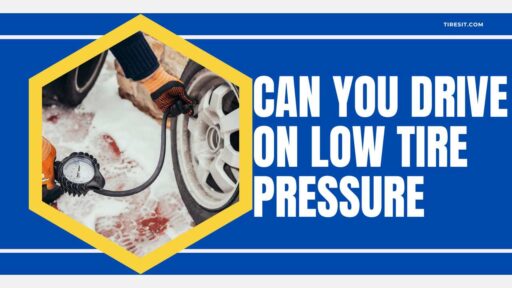Discover the optimal tire pressure for your Honda Odyssey with our comprehensive website. Ensure a smooth and safe ride with accurate tire pressure information.
Why is it important to maintain optimal tire pressure?
Among the most vital aspects of maintaining a car as a Honda Odyssey Tire Pressure owner is having properly inflated tires. The right tire pressure in a Honda Odyssey has many benefits. It boosts performance and fuel efficiency and keeps you safe on the road. Properly inflated tires have more traction, handling, and braking. This reduces the chance of accidents. Moreover, this can save you money as they will last longer. This extensive guide will take you through everything you need to know. It covers maintaining your Honda Odyssey’s best tire pressure.
Understanding the recommended pressure for Honda Odyssey Tire Pressure
It is crucial to know the right tire pressures for vehicles like the Honda Odyssey Tire Pressure. This keeps them at their best. The values are on the driver’s side door jamb sticker or inside the fuel filler flap. They may vary by factors like tire size, load capacity, and driving conditions. For optimal performance and safety reasons, it is advisable that one adheres strictly to these instructions.
A typical range for psi i.e., pounds per square inch when we talk about a right tire pressure for an odyssey ranges 32-35psi (pounds per square inch). This number may vary based on specific models or years. So, refer to the manufacturer’s guidelines for accurate figures.
How do I check the Tire Pressure on my Honda Odyssey Tire Pressure?
Checking tire pressure on your vehicle’s wheels shouldn’t be hard. You can do it at home alone.
Here are easy steps that would assist you:
- When parking the Odyssey, make sure it remains level by engaging its park brake for additional security.
- Check whether the dashboard has a TPMS button situated at the lower left-hand side of the engine area.
- Switch the ignition key to the “On” position without starting the car.
- Press and hold the TPMS button up to two times until the TPMS indicator blinks twice.
- Let go of the button, and this time around, the TPMS indicator will start blinking again.
- The instrument cluster displays tire pressure readings for each tire.
- Compare the gauge reading with the Honda Odyssey’s recommended settings.
- If your tire pressure is too low you can add some air using a compressor until it attains the right pressure levels.
- If any of your tires has high Tire Pressure, then you can release from them before it reaches at correct level using pressure gauge.
- Do this process on all of your four tires including your spare one, though;
Factors affecting tire pressures
Tire pressures on the Honda Odyssey are affected by several factors. Hence, it is important to know them since they have an impact on how safe or well-performing your vehicle is. These are some common factors affecting tire pressures:
Temperature varies. It may cause air inside tires to expand or contract. This leads to changes in tire pressure. Thus, one needs to check his/her tires from time to time, especially when there are extreme weather conditions.
Driving Conditions: The condition of the roads one drives on, like rough roads, potholes, and speed bumps, can make a car lose air pressure. In addition, off-road driving or driving over uneven ground can also affect tire pressure. Therefore, after such circumstances, it is advisable that you check your tire pressures as per the below guides.
Load Capacity: Overloading your Honda Odyssey can increase tire pressure. To prevent too much pressure, follow the recommended load capacity on the tire’s label.
Tire Age and Condition: Tires wear out with time and may start leaking air or deflating faster than normal. It is therefore important to routinely scrutinize your tires for any indications of destruction or wearing out. In order to retain an optimal tire pressure, replace worn-out or damaged tires.
Effects of Incorrect Tire Pressure
Driving with incorrect tire pressure could result in serious consequences both on your vehicle and on you as a driver. Below are some of the possible impacts of driving with either underinflated or overinflated tires:
Underinflated tires have higher rolling resistance. This leads to a vehicle using more fuel and having reduced fuel efficiency.
Uneven Tire Wear: Incorrect tire pressure causes uneven wear. This wear leads to different patterns on the affected wheels. This means the center wears more when the wheel is over inflated. The edges wear more when it’s under inflated. So, they wear out early and need early replacement.
Poor Handling and Traction: Low tire pressure reduces road grip. This makes a car less stable while driving. It affects critical things like steering and braking, which are vital for safe driving.
High inflation increases blowout risks. It strains the walls of these rubbers, making them very likely to blow out. Such situations usually cause an inability to steer, leading to accidents as well.
Reduced Braking Performance: Low tire pressure can impair braking on a vehicle. Under-inflation increases stopping distance. Blowouts happen when there’s too much air. They cause skidding during braking.
Benefits from Right Tire Pressure Maintenance
Checking your Honda Odyssey’s correct tire inflation regularly has many advantages to make your driving enjoyable and save you cost in the long run.
Safety Comes First
Obviously, the most important benefit is safety. Proper tire pressure ensures that a vehicle can stop, start, and turn effectively, especially in emergency conditions.
Fuel Economy
A properly inflated set of tires reduced rolling resistance hence making it easier for your Honda Odyssey to move. This leads to improved fuel mileage which always works well most especially when dealing with cars for family purposes.
Tire Life Span
Improper tire pressure over time results into uneven tire wear reducing the overall life of your tires. By having them at proper levels, one’s tires are able to last longer.
Tips on How to Maintain Optimal Tire Pressure
Maintaining optimal tire pressure in your Honda Odyssey is important for both personal security and vehicle performance. The following are some tips and hints that will ensure that your tires continuously remain in good shape:
- Regularly check your tire pressure: It is advisable to check your tire pressure at least once a month or before embarking on long journeys. By so doing, you will be able to notice any discrepancies from normal pressures early enough.
- Use reliable tire pressure gauges: Always buy quality gauges to check the right air pressures in automobile wheels more accurately. Digital gauges provide better accuracy and ease of reading than analog ones most of the time.
- Check for cold tires when tire pressure is increased: When you drive, the heat generated increases the tire pressure of your car. Therefore, to achieve accurate readings, always check tire pressure when tires are cold in the morning before driving.
- Adapt load to suit tire pressure: In case you are traveling with a heavy load or towing a trailer, refer to your vehicle’s user manual for its recommended tire pressures for such circumstances. The tyres should be adjusted accordingly so as to ensure that they perform optimally and safely.
- Carry out frequent inspections on your car tires: Constantly inspect your tires for any indications of damage, wear and tear or punctures. Immediately replace any damaged or overused tires so as to effectively keep up optimal tire pressure.
- Turn your wheels around: Regularly rotate your car tires in order to avoid uneven wear hence maintaining constant tire pressure. Consult the owner’s manual of the Honda Odyssey for their recommended intervals between successive rotations.
Tire Pressure Monitoring System
Recommended frequency of checking and adjusting tire pressure
To maintain optimal tire pressures for your Honda Odyssey, it is advisable that you check them at least once monthly. Additionally, it may be a good idea to gauge the air in the tires before embarking on long journeys or during extreme temperature changes. You should adjust this parameter whenever need be so that it conforms with the prescribed values by the manufacturer.
Tools And Equipment For Maintaining Tire Pressure
If you want to keep an adequate air supply into your Honda Odyssey’s tires, then you must have all these items below:
Tire Pressure Gauge: A reliable tire gauge is important because it provides correct readings thus enabling one make informed choices when filling air into his/her car’s wheels upon gauging. Select an analog versus digital meter according to personal preferences.
Air Compressor: Whenever there is insufficient amount of air inside the wheels portable compressors can serve quite well here. These compressors exist as handheld devices which enable people pump-air easily.
Pressure Gauge: A pressure gauge is used to deflate the tires that are over-inflated. It helps in making precise increments of tire pressure within the recommended limits.
Tire Inflator/Deflator Tool: This device combines both an air pump and a pressure gauge which conveniently facilitates both inflating and deflating your tires whenever necessary.
Tire Repair Kit: If you have a flat or small leak, it can be useful to keep a tire repair kit with you. These kits typically contain temporary repair materials like plugs, patches, glue, etc.
Common Issues And Solutions
In spite of your efforts, maintaining correct tire pressures can still prove daunting. Certain Honda Odysseys have TPMS (tire pressure monitoring system), which may indicate that there is something wrong with them. Below is some troubleshooting guide if you see a TPMS light on your dashboard:
Flashing TPMS Light: The sensor might be malfunctioning if the TPMS light rapidly blinks on and off. At this point one may consider replacing the sensor or checking its battery if separate battery exists for his/her TPMS sensor.
If the TPMS light remains lit all the time, at least one tire has low air pressure. After checking and adjusting, you may need to reset the system using the procedure outlined in your owner’s manual.
On-off Alternative Illumination: An intermittent indication can either mean a puncture or an impending tire failure; hence inspect it thoroughly before it gets patched or replaced.
FAQs
How Frequently Should I Rotate My Tires?
It is generally suggested that tires be rotated every 6,000 to 8,000 miles or as directed in the owner’s manual. Thus, regular tire rotation helps ensure even wear and elongate the life of your tires.
Can I use nitrogen instead of plain air to inflate my tires?
Nitrogen can provide some benefits such as better pressure retention and reduced oxidation but it isn’t a must for everyday driving. Regular air is good enough for keeping your tire pressure at an optimum level. But if you still want to use nitrogen consult your local tire service provider for assistance.
What is the right tire pressure for my Honda Odyssey’s spare tire?
The recommended tire pressure for your Honda Odyssey’s spare tire can be found in your owner’s manual or on the sticker located on the driver-side door jamb with information concerning tire pressures. It is important to check and maintain proper pressure on your spare tire as well.
Conclusion
Your safety, fuel efficiency, and overall performance depend on maintaining optimal tire pressure in your Honda Odyssey Tire Pressure. By knowing what recommended tire pressure implies, regularly checking and adjusting this parameter, and promptly addressing any problems that arise, you will guarantee the high-class condition of Odyssey’s tires. Remember to follow manufacturers’ guidelines, frequently inspect your tires, and have the necessary tools and equipment while doing maintenance work. Therefore, these steps ensure years of enjoyable driving experience in a safe manner throughout the whole journey of using a Honda Odyssey.
CTA: Keep up with maintaining proper Honda Odyssey Tire Pressure Tire Pressure so as to achieve the best outcomes from it during its usage period, plus ensuring road worthiness by regularly checking and adjusting tyre pressures as required, thereby making a smooth ride inevitable throughout its lifetime.

